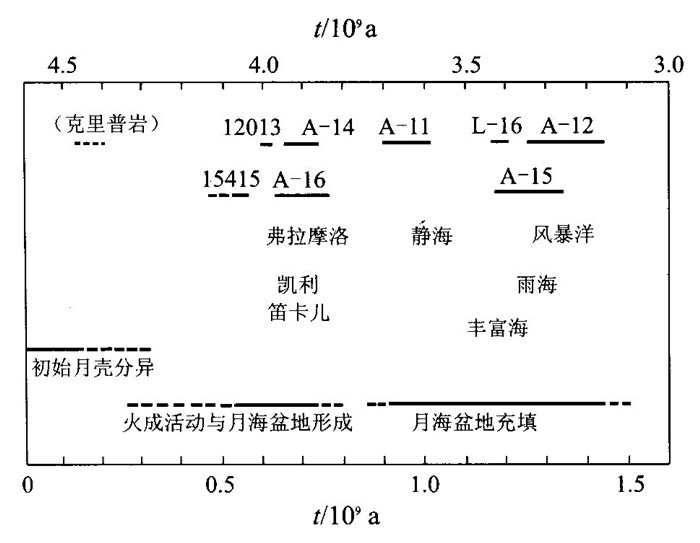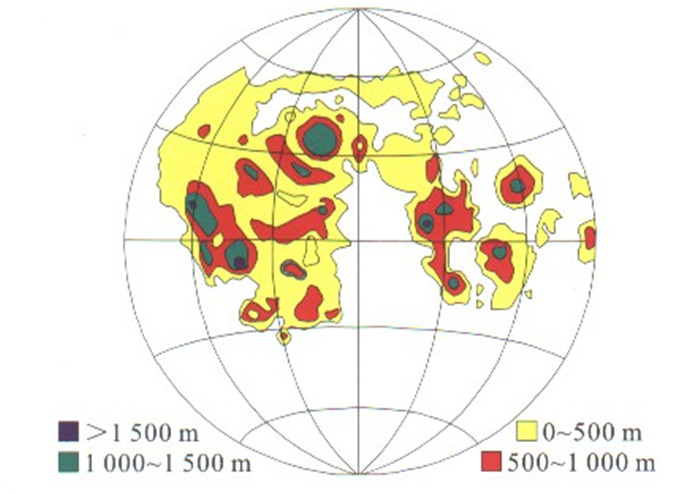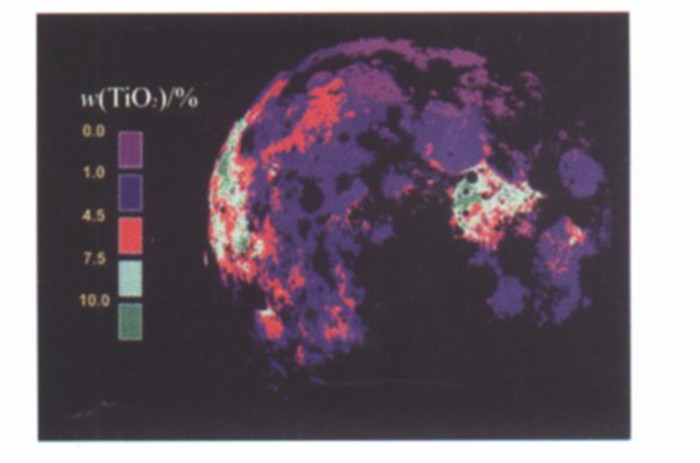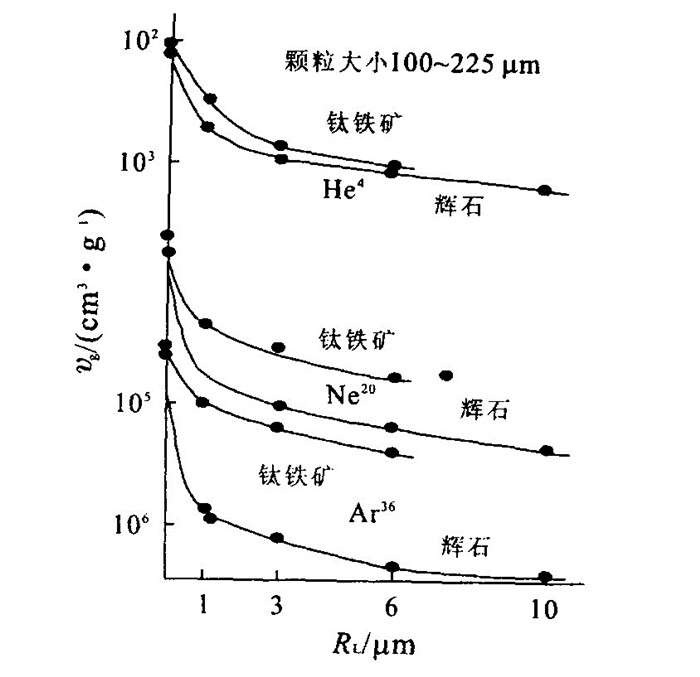Prospect of Exploration and Utilization of Some Lunar Resources
-
摘要: 21世纪月球探测的主要趋势是建立月球基地, 开发利用月球的矿产资源、能源和特殊环境, 为人类社会的可持续发展发挥长期而有效的支撑作用.通过对月海玄武岩中的钛铁矿、克里普岩中的U、Th、REE和月壤中的氦-3在月面的含量与分布的系统分析, 月海玄武岩中蕴藏有极丰富的钛铁矿, TiO2总资源量超过70万亿t, 钛铁矿还是月球基地生产水和火箭燃料的主要原料; 克里普岩是未来月球探测与研究的热点之一, 其蕴藏有巨量的铀、钍、钾、磷和稀土元素资源; 月壤长期受到太阳风的照射, 使其蕴藏有极其丰富的氢、氦、氧、氮等气体资源, 其中氦-3的资源量大于10 0万t, 它是一种可供人类社会长期使用的、安全、清洁、高效、廉价的核聚变发电燃料, 其含量与月壤的化学成分、矿物组分、颗粒大小等有密切的关系.Abstract: The establishment of the lunar base is the main trend of the lunar exploration and detection in the 21st century, because the exploration and utilization of the lunar mineral resources, energy and specific environment will effectively support the sustainable development of human society. The authors make a systematic study of the distributions and contents of ilmenitite in lunar basalts, those of U, Th, REE in KREEP rocks and those of He 3 in the lunar regolith. Then the authors show two points: (1) More than 70 000 billion tons of titanium dioxide occur in lunar basalts. The ilmenitite is the major raw material for the production of water and missile fuel in the lunar base. (2) KREEP rocks, one of the hot issues for the detection of and research into the lunar planet, contain a gigantic mount of uranium, thorium, calcium, phosphorus and rare earth elements. The lunar regolith has been affected by the solar wind for a long time, so that it contains such abundant gas resources as hydrogen, helium, oxygen and nitrogen. In particular, the He 3, amounting to over 1 million tons, is a kind of nuclear fusion fuel for the production of electrical power. This kind of fuel, safe, clean, highly efficient and cheap, can be applied to the human society for a long time. The content of helium is closely associated with the chemical composition, mineral assemblage and grain size of the lunar regolith.
-
Key words:
- lunar resources /
- lunar mare basalt /
- KREEP rock /
- lunar regolith
-
图 2 月球表面铁和钛的质量分数分布[5]
Fig. 2. Mass fractions of iron and titanium on the lunar surface
图 3 月球正面月海盆地内玄武岩的厚度分布[14]
Fig. 3. Basalt thickness on the lunar mare basin
图 4 月球正面TiO2质量分数分布[15]
Fig. 4. Mass fraction of TiO2 on the lunar nearside surface
-
[1] 中国科学院地球化学研究所. 月质学研究进展[M]. 北京: 科学出版社, 1977.41-203.Institute of Geochemistry, Chinese Academy of Sciences. Research progress of selenology[M]. Beijing: Science Press, 1977.41-203. [2] 欧阳自远. 天体化学[M]. 北京: 科学出版社, 1988.93-145.OUYANG Z Y. Space chemistry[M]. Beijing: Science Press, 1988.93-145. [3] 邹永廖, 欧阳自远, 李春来. 月球探测与研究进展[J]. 空间科学学报, 2000, 20 (增刊): 93-103. https://www.cnki.com.cn/Article/CJFDTOTAL-KJKB202101008.htmZOU Y L, OUYANG Z Y, LI C L. The lunar exploration and research progress[J]. Journal of Space Sciences, 2000, 20 (Suppl): 93-103. https://www.cnki.com.cn/Article/CJFDTOTAL-KJKB202101008.htm [4] Jolliff B L, Gillis J J, Haskin L A, et al. Major lunar crustal terranes: surface expressions and crust-mantle origins[J]. Journal of Geophysical Research, 2000, 105 (E2): 4197-4216. doi: 10.1029/1999JE001103 [5] Elphic R C, Lawrence D J,Feldman W C,et al.Lunar Fe and Ti abundance: comparison of lunar prospector data[J]. Science, 1998, 281 (4): 1493-1496. [6] Lucey P G, Blewett D T, Hawke B R. Mapping the FeO and TiO2 content of the lunar surface with multispectral imagery[J]. Journal of Geophysical Research, 1998, 103: 3679-3699. doi: 10.1029/97JE03019 [7] Lucey P G, Taylor G J, Hawke B R, et al. FeO and TiO2 concentrations in the South Pole-Aitken basin: implications for mantle composition and basin formation[J]. Journal of Geophysical Research, 1998, 103: 3701-3708. doi: 10.1029/97JE03146 [8] Lawrence D J, Feldman W C, Barraclough B L, et al. Global elemental maps of the Moon: the lunar prospector gamma-ray spectometer[J]. Science, 1998, 281 (4): 1984-1988. [9] Lucey P G, Blewett D T. Lunar iron and titanium abundance algorithms based on final processing of Clementine ultraviolet-visible images[J]. Journal of Geophysical Research, 2000, 105 (E8): 20297-20305. doi: 10.1029/1999JE001117 [10] Haskin L A, Korotev R L, Rockow K M, et al. The materials of the Lunar Procellaru-KREEP terrane: a synthesis of data from geomorphological mapping, remote sensing, and sample analyses[J]. Journal of Geophysical Research, 2000, 105 (E8): 20403-20415. doi: 10.1029/1999JE001128 [11] Head J W. Lava flooding of ancient planetary crusts: geometry, thickness, and volumes of flooded lunar impact basins[J]. Moon and Planets, 1982, 26: 61-88. doi: 10.1007/BF00941369 [12] Head J W, Wilson L. Lunar mare volcanism: stratigraphy, ruption conditions and the evolution of secondary crusts[J]. Geochimi Cosmochimi Acta, 1992, 56: 2155-2175. doi: 10.1016/0016-7037(92)90183-J [13] Budney C J, Lucey P G. Basalt thickness in mare humorum: the crater excavation method[J]. Journal of Geophysical Research, 1998, 105 (E8): 16855-16870. [14] Heiken G, Vaniman D, French B M. Lunar sourcebook—a user's guide to th eMoon[M ]. Cambridge: Cambridge University Press, 1991.121-474. [15] Giguere T A, Taylor G J, Hawke B R, et al. The titanium contents of lunar mare basalts[J]. Meteoritics and Planetary Science, 2000, 35 (1): 193-200. doi: 10.1111/j.1945-5100.2000.tb01985.x [16] Wieczorek M A, Phillips R J. The "Procellarum KREEP Terrane": implications for mare volcanism and lunar evolution[J]. Journal of Geophysical Research, 2000, 105 (E8): 20417-20430. doi: 10.1029/1999JE001092 [17] Lawrence D J, Feldman W C, Barraclough B L, et al. High resolution measurements of absolute thorium abundances on the lunar[J]. Geophy Res Lett, 1999, 26 (17): 2681-2684. doi: 10.1029/1999GL008361 [18] Lawrence D J, Feldman W C, Barraclough B L, et al. Thorium abundances on the lunar surface[J]. Journal of Geophysical Research, 2000, 105 (E8): 20307-20331. doi: 10.1029/1999JE001177 -










 下载:
下载:






